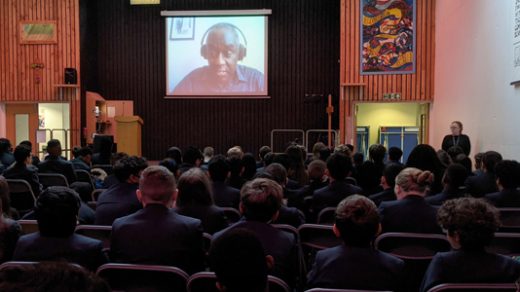E-Safety: NOT Safer Internet Day – Staying safe on-line
By Mr Seth Felton is the Year 5 Class Teacher and E-Safety officer/Computing Subject Leader at St. Paschal Baylon
After a recent chat in the head’s office about my redevelopment of the school website (I was in the good books); I somehow managed to leave her office as the new E-Safety Officer for the school. ‘How hard can it be?’ I thought to myself as I walked back to my class of 25 excitable children.
It was at the end of the day, when the school building had been left long behind, the dog had been walked and I’d actually eaten my evening meal (usually at about 7:30) that I sat down and opened my laptop to research e-safety.
What I found from my numerous searches can only be described as a mine-field of information. My initial question had been more than answered (Google returned about 489,000,000 results in 0.23 seconds) and had quickly developed into ‘Where on earth do I start?’ I narrowed this down to two options:
Ofsted’s ‘Inspecting e-safety in schools: Briefing for section 5 inspection’.
360°safe: An award winning e-safety self-review tool
I chose the first of the two to begin my trek through the e-safety minefield and was immediately impressed with Ofsted’s 3 C’s – easy to stick in the minds of children and teachers alike.
E-Safety is about: Content, Contact, and Conduct. And thus the first e-safety posters for our whole school environment formed in my mind.
My jovial mindset quickly changed as I read Ofsted’s inadequate practice section (There is no progressive, planned e-safety education across the curriculum, for example there is only an assembly held annually), because my last e-safety lesson had been on Internet Safety Day 2013. My new role had suddenly taken on mammoth proportions, and it was at this point that the 360°safe website became my e-safety bible (I cannot recommend it highly enough).
After registering with 360° I quickly headed to the review tool, and began, with increasing excitement, to truthfully answer the questions as to where my school was at with e-safety. It is a graded system from 1 – 5 with 1 being best practice and 5 being most room for improvement. After flying through the four sub-headings of education, infrastructure, policy & leadership and standards & inspection I was relieved to see that we came out as an overall 4 (each individual aspect, there are 28, are graded).
With plenty of room for improvement, I was pleased to find out that we had 2 e-safety certificates from 360° waiting to be downloaded and the most detailed action plan (I didn’t even have to write it) waiting to be downloaded and saved.
From stepping out of the head’s office less than 3 weeks ago, to panicking about Ofsted’s inadequate practice list, to discovering the 360°safe website I have come to realise not just the magnitude, but the vital importance of keeping all of the children in our care as safe as possible on line and more importantly than that, I have a clear plan of action to develop a whole school curriculum for e-safety in our school and it is the children who will drive it. For it is they who return home and take themselves anywhere they like on the internet – via tablets, mobile phones, laptops, PCs, consoles – in an increasingly unfamiliar way to adults, through avenues such as Snapchat, Kick, BBM, and online headsets for PS3/Xbox to name but a few.
Next time: Setting up and being a member of a children’s e-safety group (written by the children – for children)




